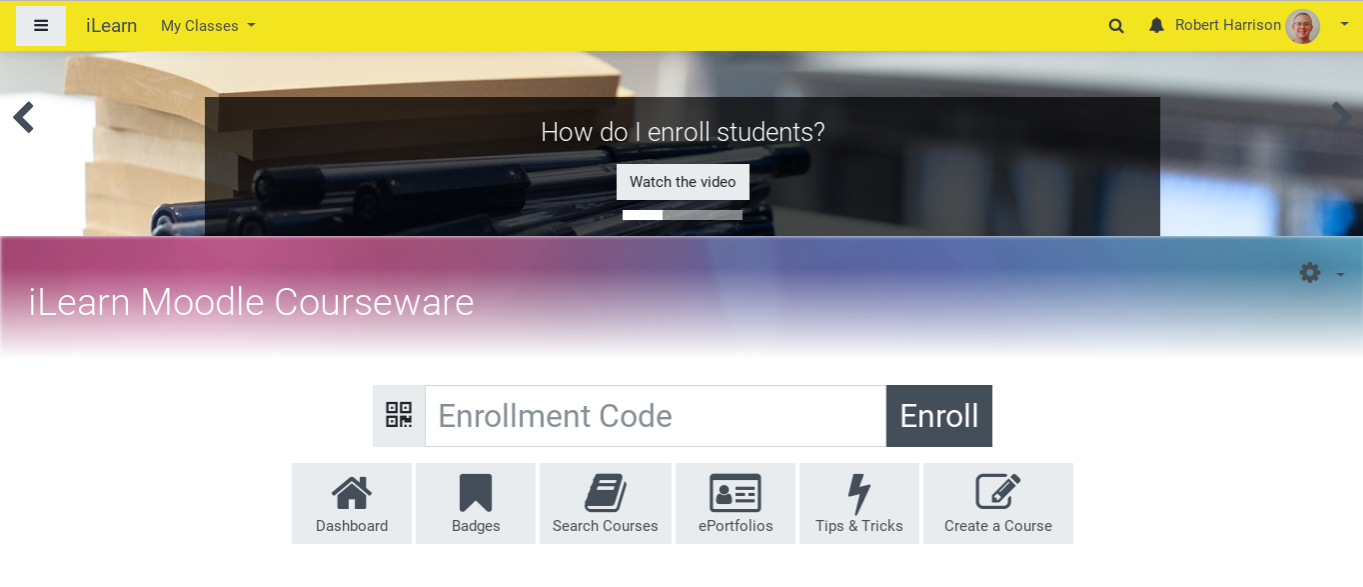Moodle: It’s not just 4 nerds.
Over the past 12 years, many teachers in our district have tried using Moodle (in Dearborn, we call our Moodle site iLearn). A few absolutely took off with it. Many of those teachers are still using it, and at increasingly higher levels each year. Most, however, got started, got lost, and got out. It’s hard to blame them. It’s a little confusing. After all, Moodle is a powerful tool. As we all know, each added feature increases the complexity of a tech tool exponentially. If you don’t believe me, just take a look at how Google Classroom has changed. Unlike Google Classroom, Moodle is a full-on LMS (Learning Management System), which, if we’re going to be serious about integrating technology into our classrooms, is an imperative for teachers and schools to be using to its maximum potential because it just allows the possibilities of technology to manifest themselves in reality.

In Dearborn, we’re still building. But where we had just a handful of teachers and students using Moodle at the beginning, we now have multiple examples of teachers using Moodle in amazing ways across our district. And more are popping up all the time. Teachers of all backgrounds are using Moodle, from the computer applications teacher to the teacher that doesn’t consider himself “tech-savvy”. Each is slowly discovering the possibilities, useful attributes, limitations, ways that Moodle can make learning better for kids, and ways that Moodle can make things easier for teachers.
Here are just a few of the ways we’ve seen teachers using Moodle of late:
- 9th grade ELA teachers at Dearborn High are using Moodle to enable freshmen who wish to earn the Honors designation on their transcript. Students enroll in the Honors course, choose the book they would like to read, and based on their choice, they are automatically enrolled in a discussion forum specific to their book with students school-wide who have chosen the same book. And all of this takes place outside of the classroom.
- Upper Elementary teachers use Moodle for weekly spelling tests. Students go in to the course each week to take a quiz on which they click the button to hear the word read and enter the word in the box below where it is automatically graded. One of the great things about this is that all of the questions are scrambled, so each student has a completely different version of the test (potentially). The tests can be shared district-wide. All of this is available thanks to the hard work of a small handful of teachers who have done the difficult work.
- Middle School Math teachers in several buildings, and some in teams, use Moodle for lesson and unit assessments. This allows them to get feedback to students quickly and provides a secure environment since many of them are using the iLearn Secure Browser (an app available at the bottom of the screen on Chromebooks that prevents students from going to any site other than iLearn).
- Teachers at the Elementary, Middle, and High School levels use Moodle for Peer Assessment, employing the wonders of the Workshop Module. The Workshop Module enables students to turn in work, then distributes to each student a set of their peers’ work based on the teacher’s settings. Students grade their peers based on the rubric provided by the teacher and get a grade for both their submission and their own assessment of their peers.
- Language Arts teachers in many of our middle schools use Moodle for common assessments, as well as other assignments students turn in so students really only have one place to go for their class.
- Art teachers at Fordson and Edsel Ford use Moodle to assess student artifacts with the capabilities of the Moodle Assignment Module and the availability of a clickable rubric for assessing students.
- Music Teacher Mrs. Nichole Hartrick at our 2018 National Blue Ribbon School, STEM, uses Moodle to help facilitate the various levels of differentiation that are required for music teachers–from instrument types to experience and ability levels, since each has different and unique needs.
…And there are plenty more that we’ve featured before or will soon.

Over the years, Moodle has changed. In many ways, it’s not what it used to be. It is even more powerful than it used to be. It looks cleaner than it used to. One thing that hasn’t changed about it is how much it changes learning for kids and makes the work of teachers more efficient. Without a doubt, there’s a learning curve. And there are limitations with this as with any tool without exception. But it’s not just for the “tech savvy” any more (whatever that subjective and relative designation means, anyway). And it’s a tool that our district has supported for over a decade and is invested in continuing for the foreseeable future. It’s also one of the many ways the Tech Coaches help teachers integrate technology: by easing the learning curve, modeling, and facilitating team creation of materials in Moodle, as well as providing continued support for teachers who have discovered the possibilities of the tool and helping to brainstorm ways to empower learning with Moodle.
It may be time for you to get on board, too, if you haven’t done so already.

